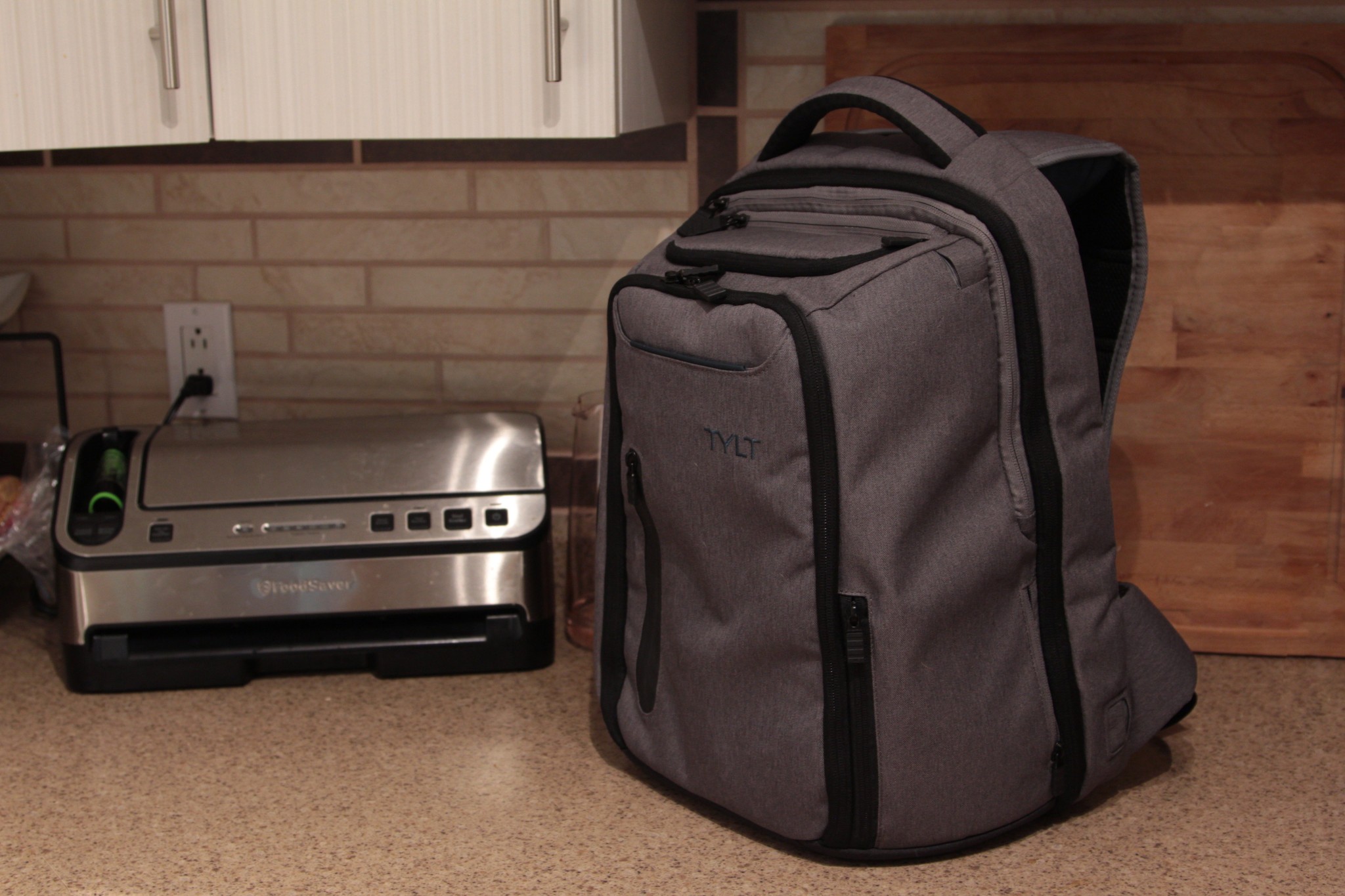I have a couple of "go" bags stashed around my house for various activities. There's my derby coaching bag, which has whistles, a first aid kit, and spare tools for my skates; there's my hiking bag, which has some Cliff bars, a few Lifeproof straws, and a solar charger; and there's my café bag, which has my AirPods, a MacBook Pro charger, and — often enough — my MacBook Pro itself.
But if I could only have one tech "go" bag, it would be Tylt's Energi Pro Backpack, the Backpack of Holding that I never knew I needed.
Pockets, pockets everywhere
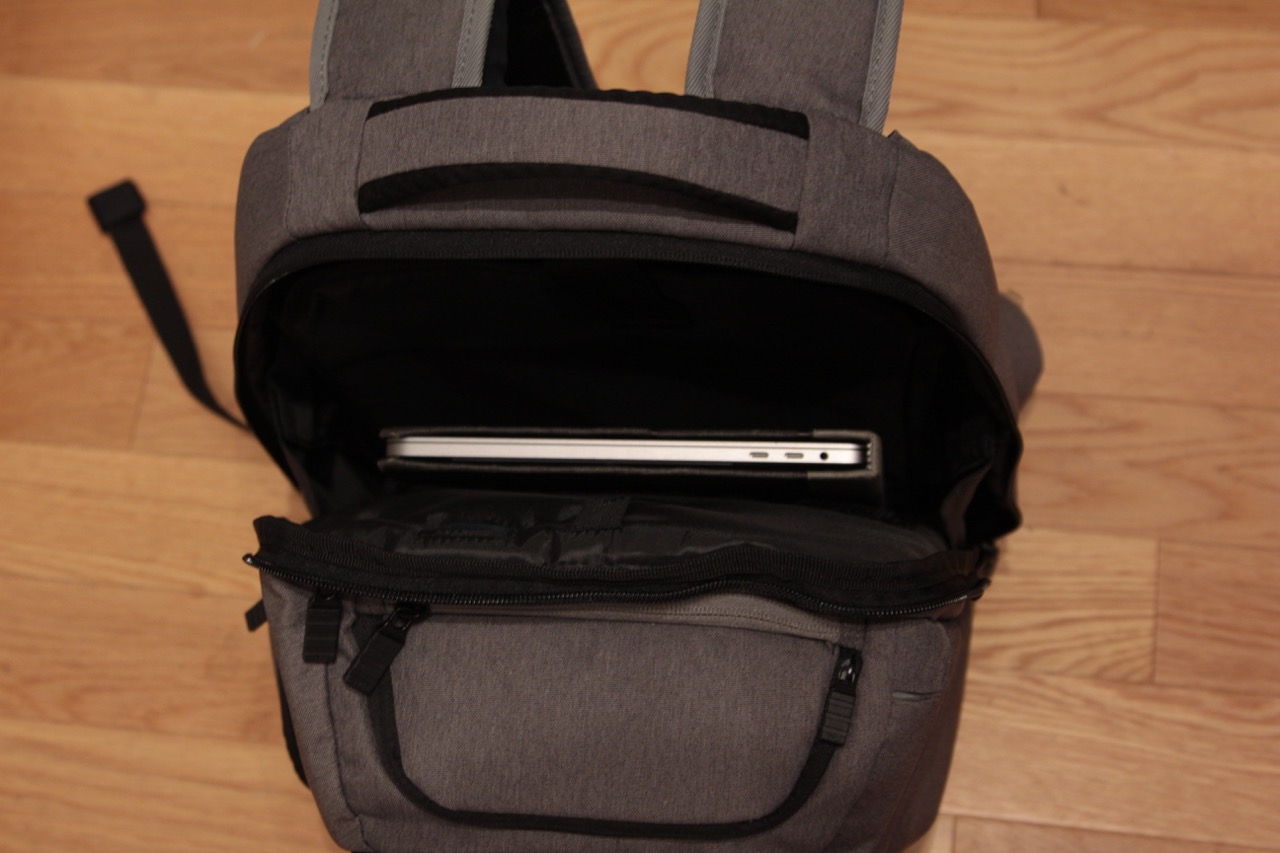
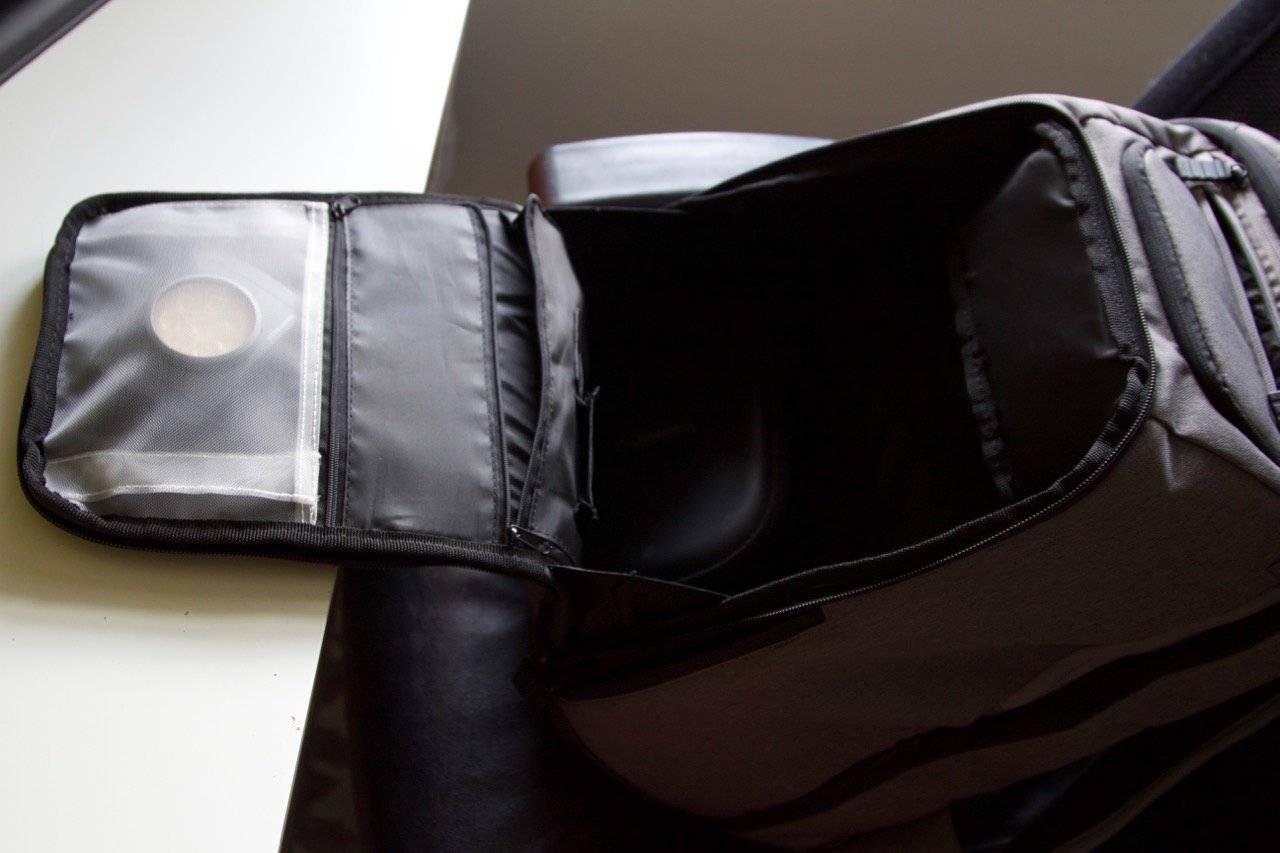
I'm a fan of pockets and compartments, but the $149.99 Energi Pro puts my fandom to shame: There are, no joke, 11 different compartments (and over 20 if you count internal pouches and zippered pockets). And these aren't just teensy, tiny, barely-a-zipper-and-a-prayer compartments; these are fully functional pouches, all of which can hold, at bare minimum, an iPod or iPhone SE.
There are two main compartments to the Energi Pro: the main pouch and the laptop compartment. The laptop compartment is the rearmost top zipper and offers enough space to store a 15-inch MacBook Pro or equivalent laptop. It also has a decent amount of depth: I've put both my 13-inch MacBook Pro and 10.5-inch iPad Pro side by side in the compartment before.
The main pouch opens its flap horizontally, like a small carry-on suitcase, and takes up much of the cavernous 9-inch depth of the backpack. The compartment reminds me of an old DSLR bag, with a water-resistant interior and space to add dividers if you so chose; there are also several tiny pockets and pouches along the interior of the flap.
With those two out of the way, let's run down some of the other pockets on this bag, in lightning round fashion.
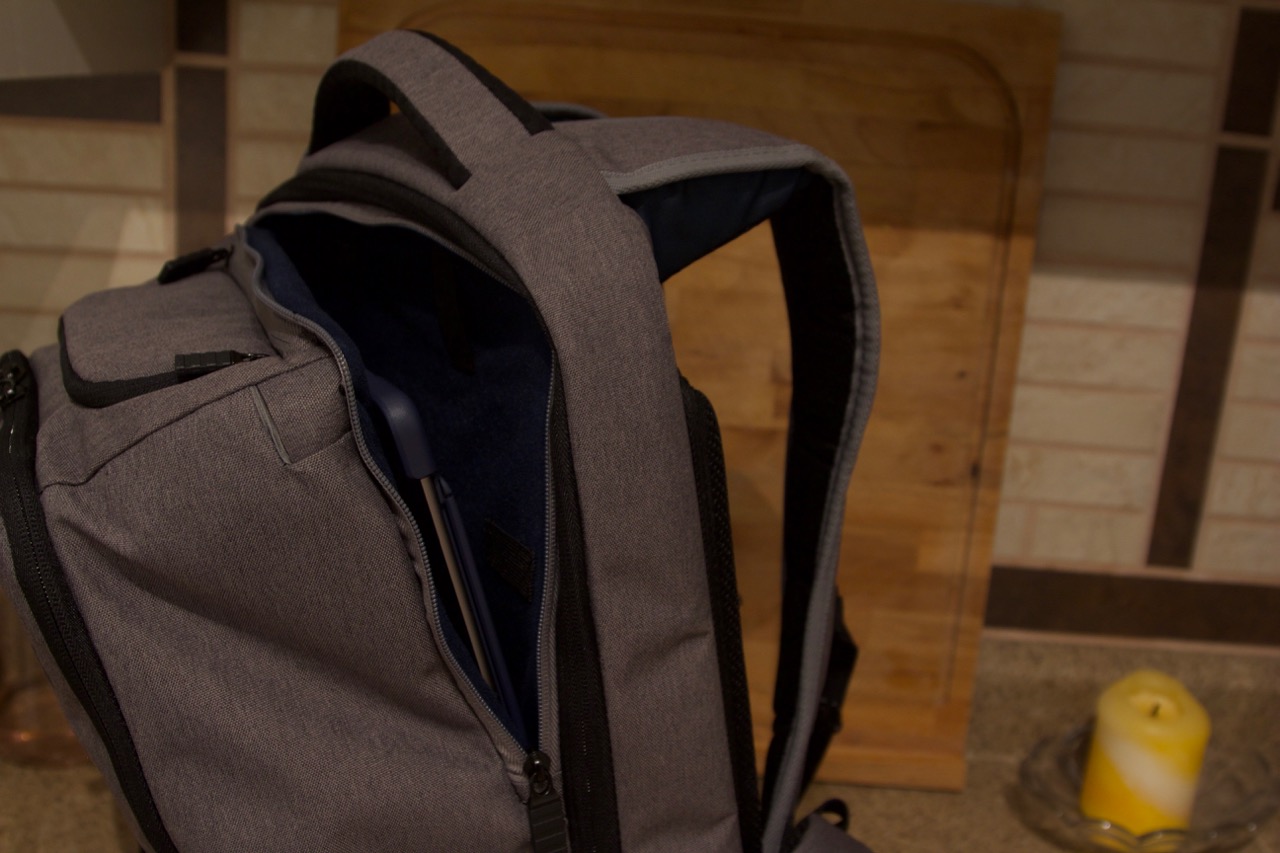
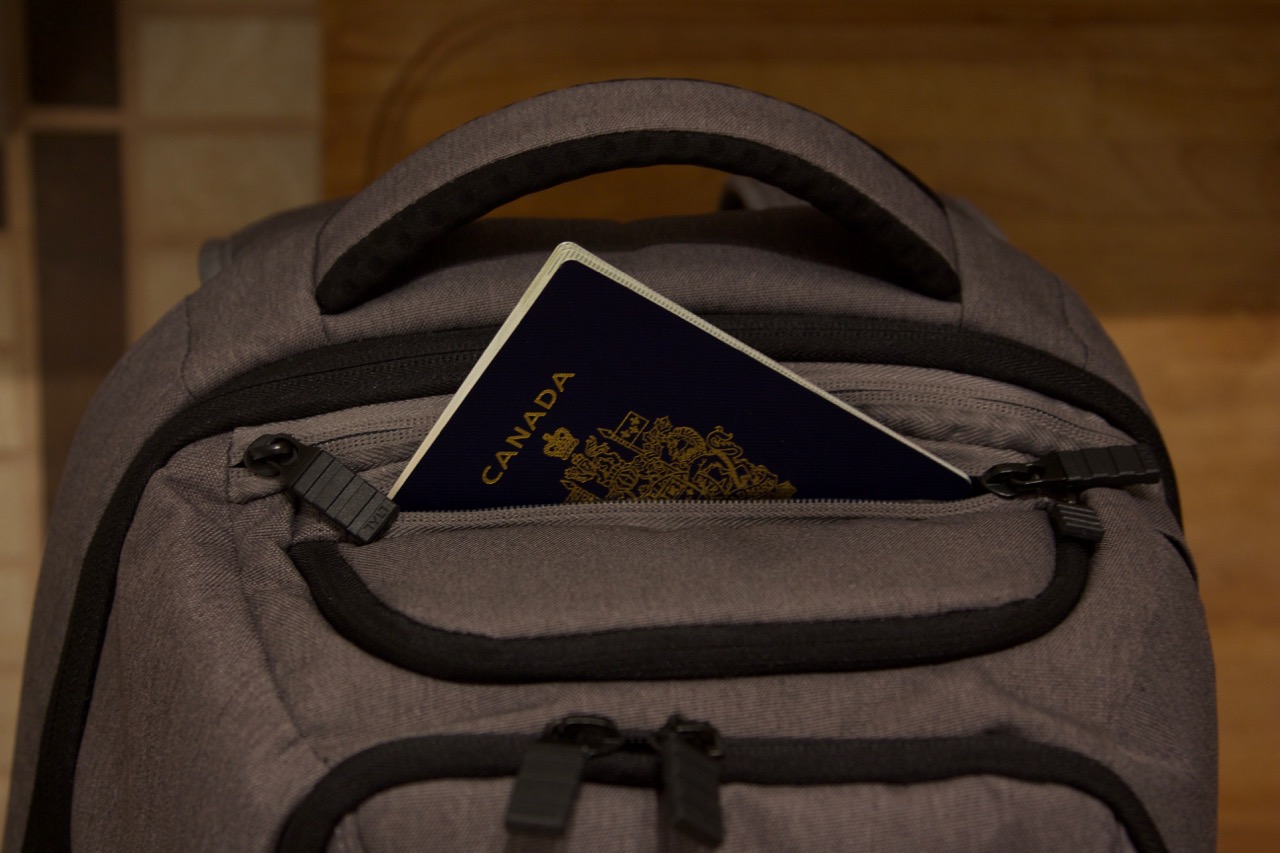
3. iPad pouch
This partial-zipper sleeve opens up right in front of the laptop compartment and fits a 10.5-inch iPad with room to spare. I suspect it may even hold a 12.9-inch model, though I haven't tested it.
4. Secret card pouch
The top zipper in front of the iPad pouch offers a passport- or iPhone-sized slot to hide about 2 inches' depth worth of stuff; I've put my passport and business cards in there in the past, though it's also a fairly decent iPhone or iPod slot.
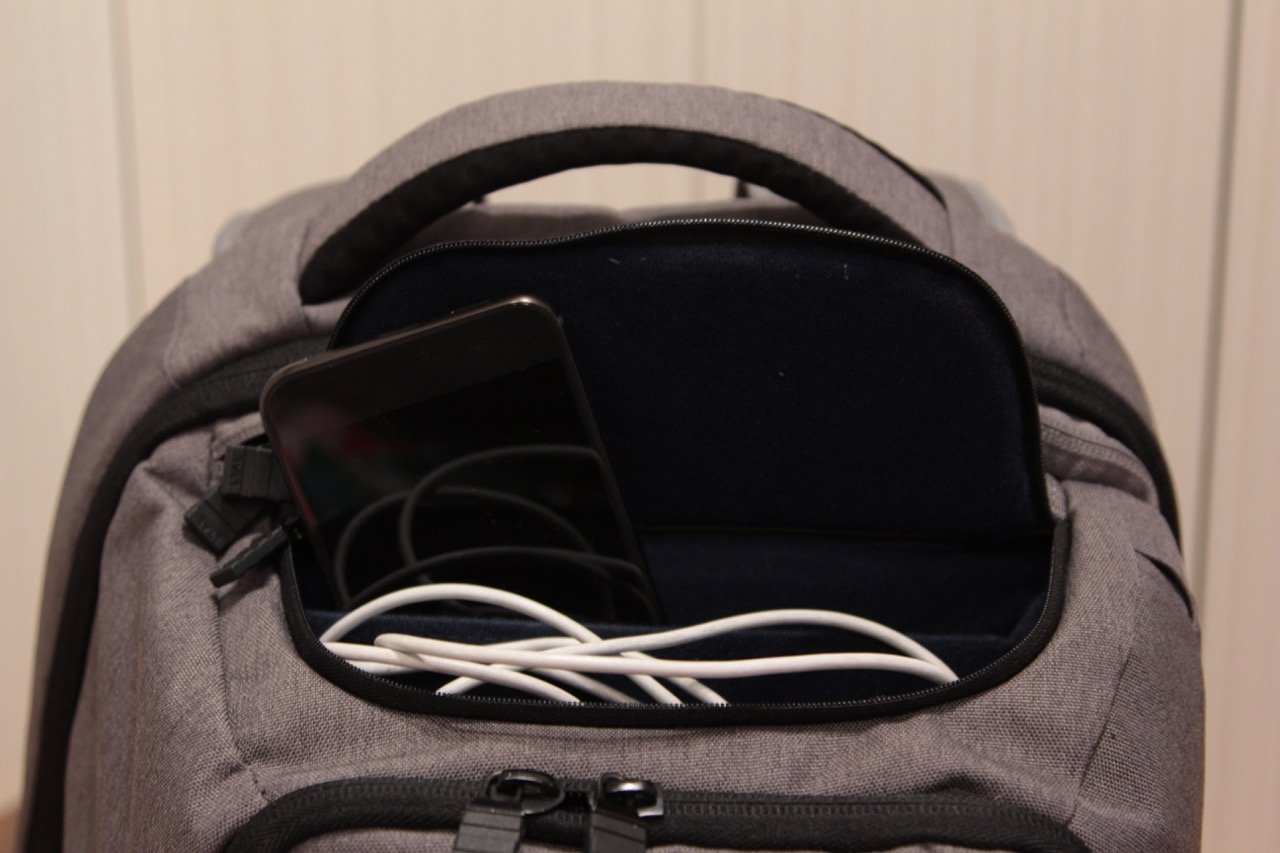
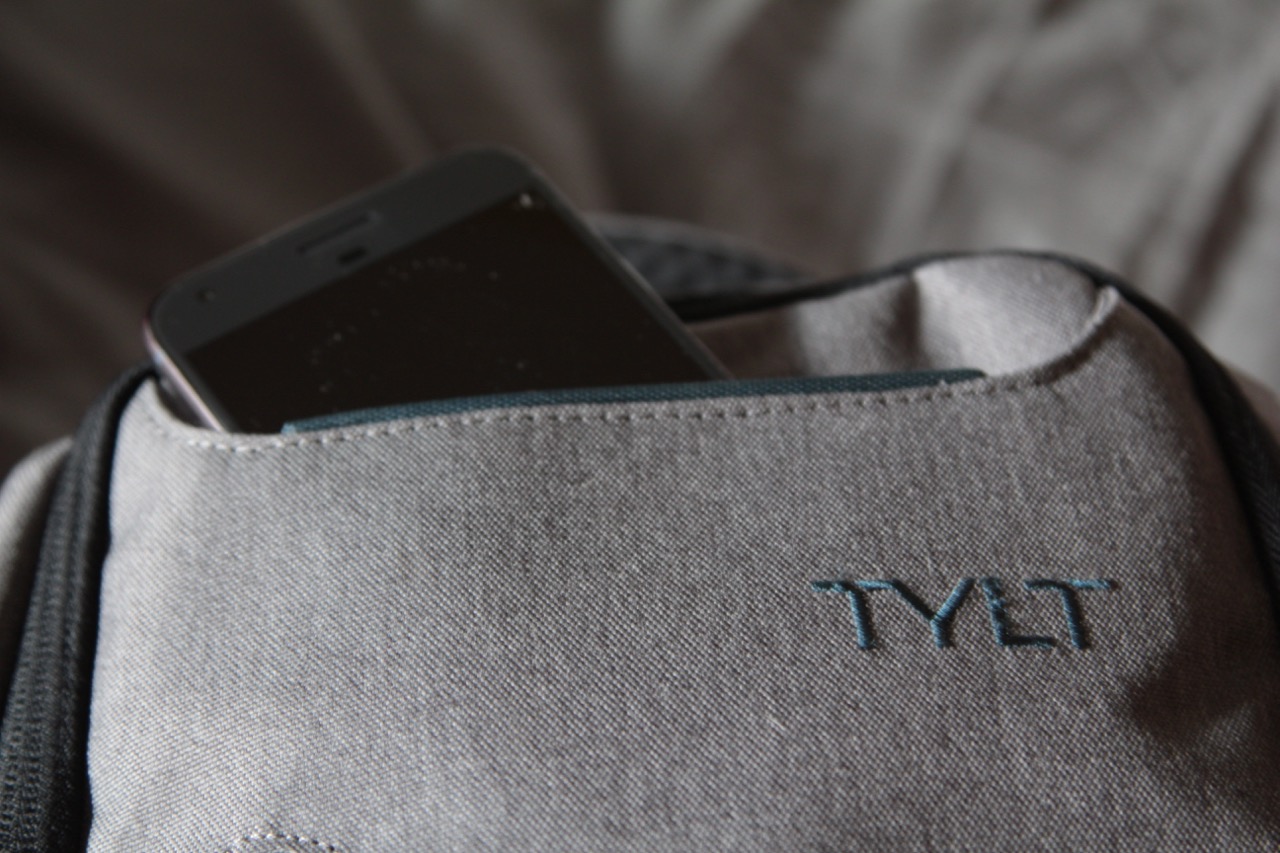
5. Mini main pouch
This is the pouch where my iPhone and easily accessible accessories tend to live. The top-mounted rectangular pouch is about a fifth the size of the main pouch, with room for an iPhone (and a protective divider to keep its screen safe), charging cord, chapstick, and some other miscellany. Its space sticks down into the main compartment, so the more stuff you've shoved into the main pouch, the less room you'll have here.
6. Slide pouch
The kangaroo-like pouch on the front of the bag goes halfway down and has room for an iPhone or two, along with charging cords, documents, or anything else you feel like having fairly accessible. The content is held in by a magnetic fabric clasp, though it's not solid enough that I'd trust electronics in there if you were planning to either check this bag or turn it upside-down.
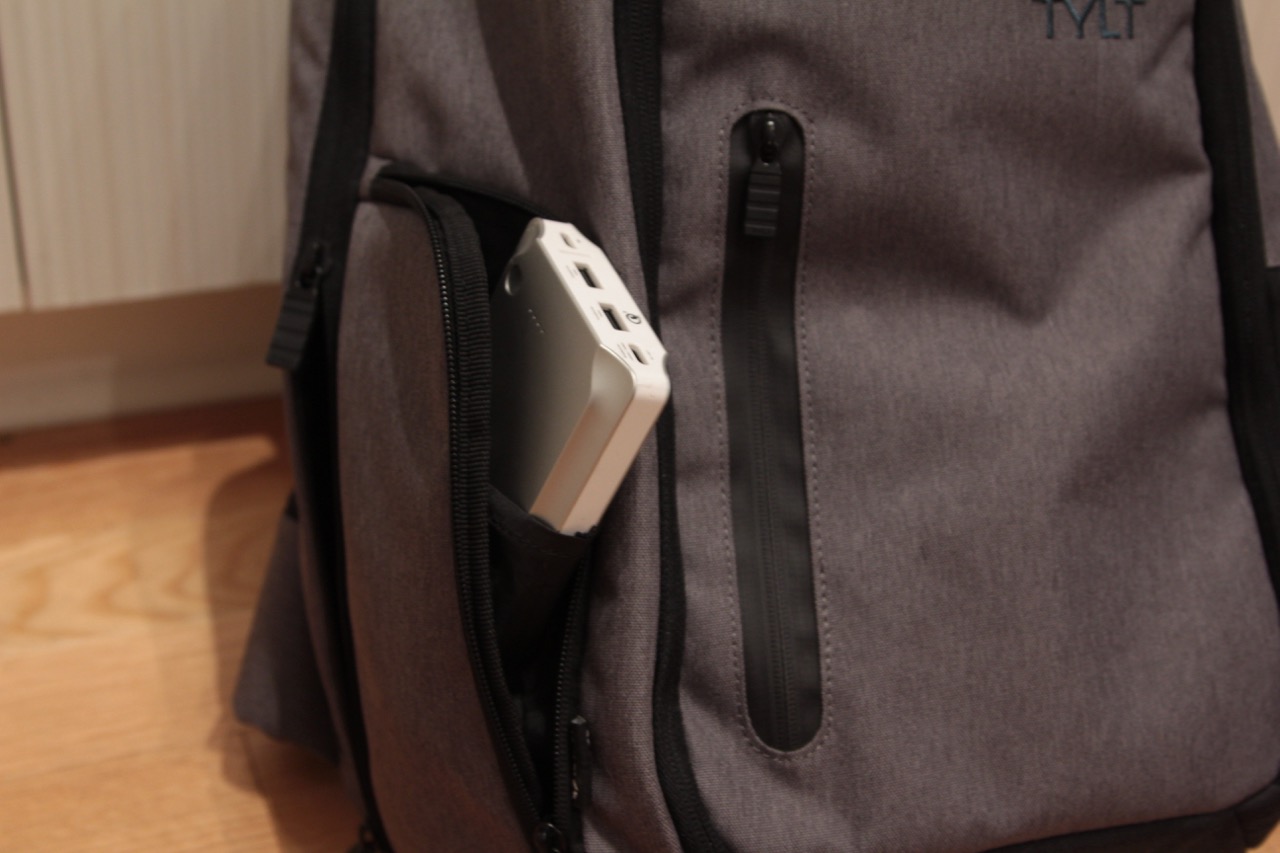
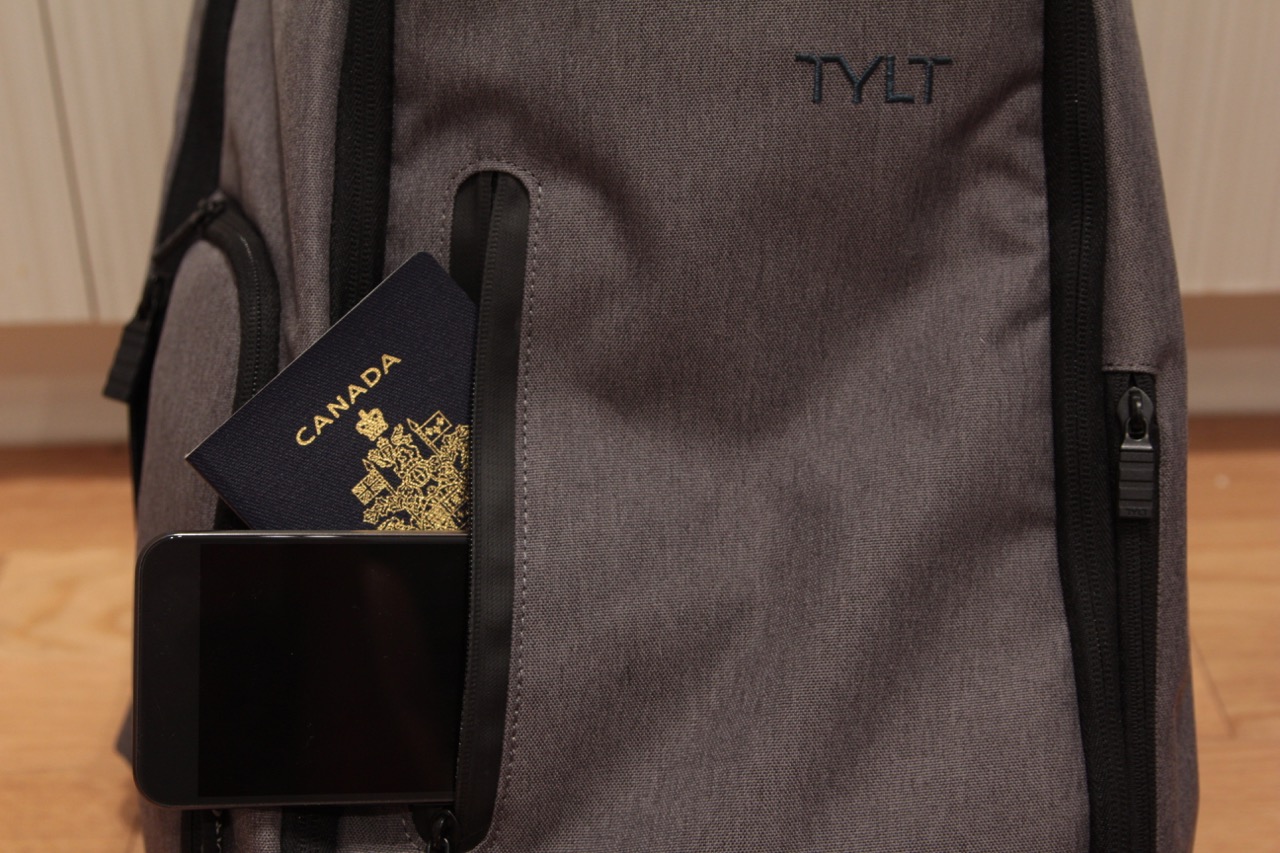
7. Front zippered pouch
The zippered compartment on the bag's front is another iPhone-sized compartment; I've used it to store my passport in the past, along with easily accessible papers.
8. Battery pouch
This is the pouch that gives this cavernous bag its name: It's a rectangular, side-zippered pouch that contains a removable 20100mAh battery with USB and USB-C ports, allowing you to charge up to three devices simultaneously. It's a monster of a battery that somehow avoids being too bulky or awkward, though you can't store much else in the pocket with the battery inside of it.
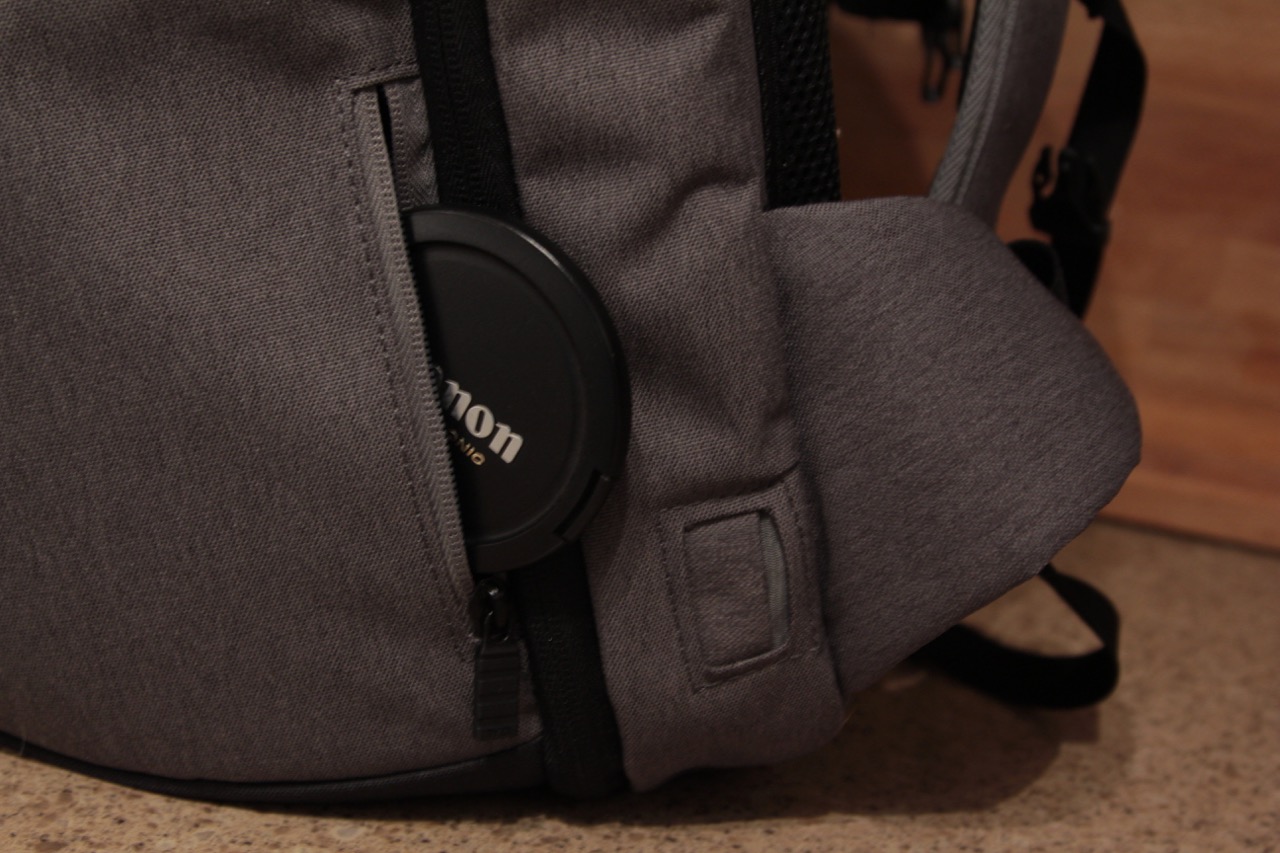
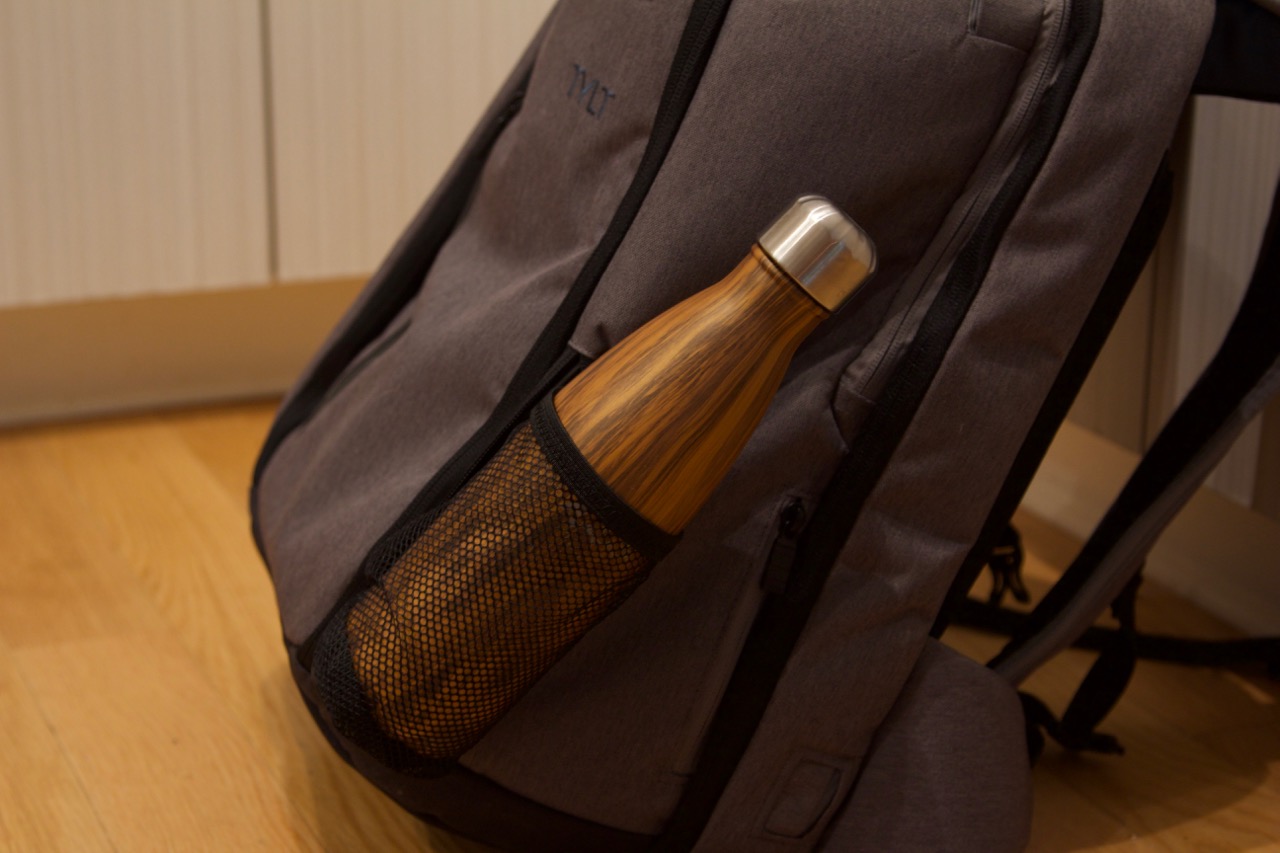
9. Side pouch
One of the smallest compartments resides on the opposite side of the battery pouch; it's iPod nano-sized, though I've used it largely to hold a Tile tracker and weird USB-C adapters.
10. Drink pouch
Before you hit the side pouch, you'll find a zippered pouch that offers a mesh container to hold a drink. It's not a big enough mesh sleeve for much more than a 20oz soda or water, but it's a small touch from a bag that otherwise ignores food or water storage.
11. Strap pouch
Yup, there's even a zippered pouch along the bottom of the Energy Pro's backpack straps. It's most useful for things like spare change, a Pokémon Go Plus, or credit cards; that said, I didn't even know this pouch existed for the first month of testing this backpack. There are so many pockets; I simply overlooked this one — that's how crazy this bag is.
Ch-ch-charging
Surprisingly, this bag's main draw isn't its incredible number of pockets; it's the Energi Pro's whopper of a portable battery. At 20100mAh, it's on par with Mophie's powerstation XXL, though not quite as sleek. Tylt's battery is the approximate height and width of an iPhone 7 Plus, but three times as thick and quite a bit heavier.
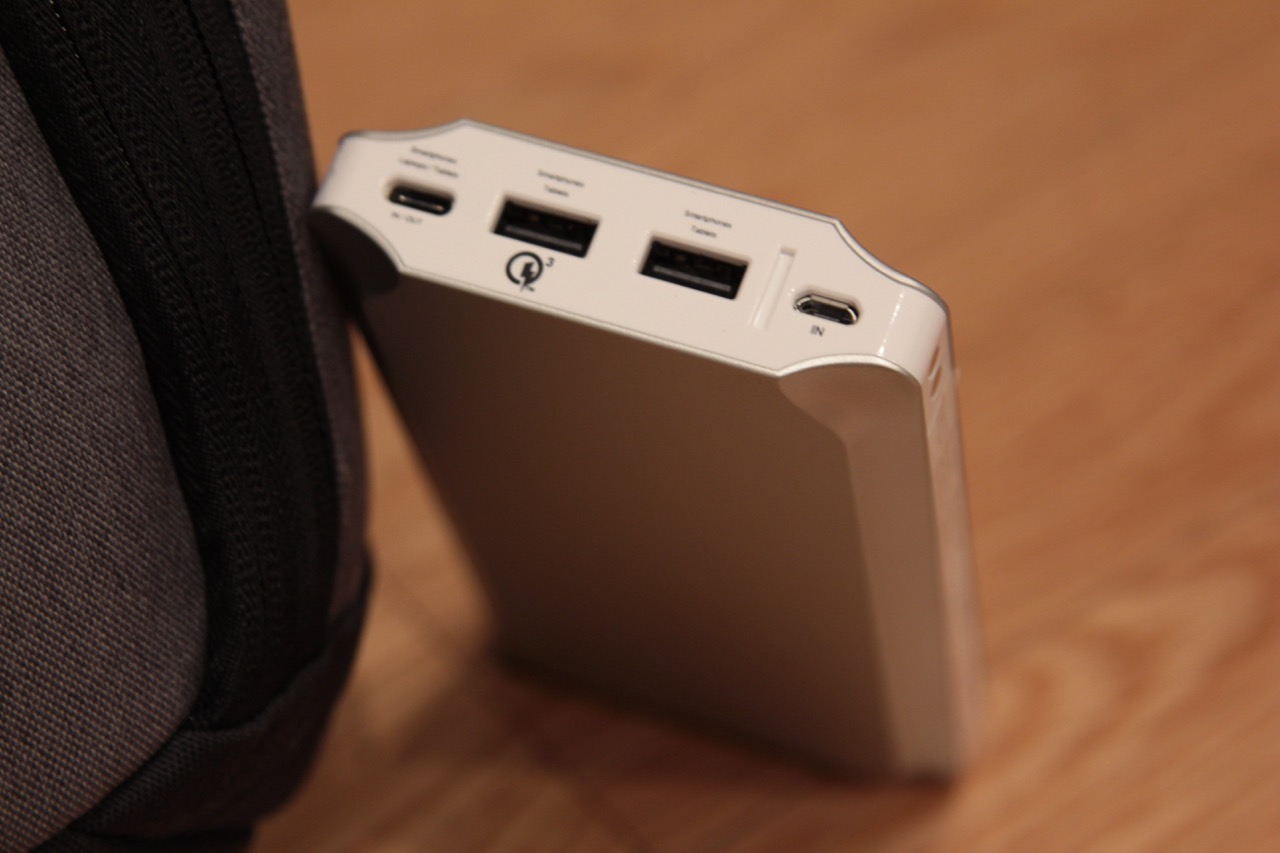
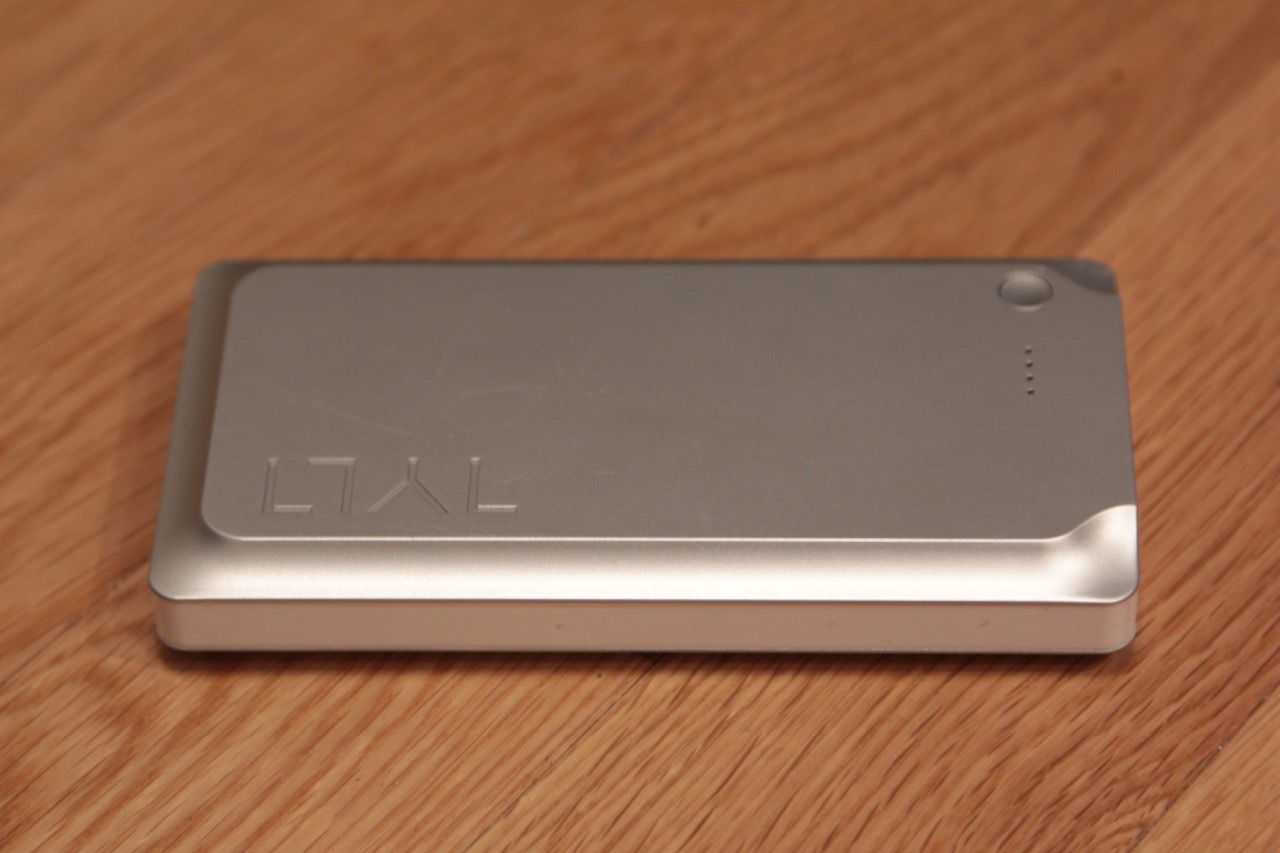
The way the backpack is constructed, however, you barely notice the weight — but you'll definitely notice the advantage to having a gigantic portable charger in a backpack designed to easily charge your devices while they're hanging out inside the backpack. Better still, the charger isn't attached to the backpack the way some other powered options are, so you can move it just about anywhere to access its ports or recharge it.
Speaking of ports, the Tylt battery has three: a standard USB-A port, a USB-A port that supports Qualcomm's quick-charging technology (and will charge your iPhone at its top charging speed), and a USB-C port that will charge just about anything — including the new MacBook Pros. I've been writing most of this article with my 13-inch MacBook Pro plugged into the Tylt battery; the MacBook's battery level hasn't dipped below 100%.
Now, how much charging time you'll get for a computer will vary significantly versus a phone or tablet. You're likely only to pull a single full 13-inch MacBook Pro charge off Tylt's battery, one to three charges for an iPad Pro, or six to eight charges for your iPhone. So if you forget to charge your MacBook Pro, you can't also forget to charge your iPhone unless you're willing to settle for one being half-charged.
Those caveats aside, I haven't run into a situation yet where I feel like the Tylt isn't enough battery for my needs. It recharges within a night either via USB-C or Micro USB and a wall outlet, and I've yet to find an instance where I need a charge and it isn't there for me.
Tylt's bag alone is pretty great. But when you combine it with the battery, it's a steal. You're essentially either getting a nice bag for $50 less than what it would cost by itself, or half-off a comparable battery. If you're looking for both — especially if you need USB-C charging capability — this is a fantastic buy.
Comfort and carry
While Tylt's bag isn't the fanciest or flashiest tech bag out there, it does the work: The grey and black fabric exterior keeps your electronics protected even in an air or car situation, and the straps and back are well padded and offer adequate airflow for longer backpacking trips. This isn't a hiking bag, nor does it have the style points picked up by your average Pad & Quill fare.
That said, it's solid all-around: It feels utilitarian without feeling bulky (or worse, impossible to carry if you're not insanely tall). It's one of the few tech bags that doesn't make me feel ridiculous while carrying it, but still allows me to pack enough gear inside the bag that I can travel effectively.
Honestly, the best praise I can give this bag is that I'd use it to set dress a science-fiction dystopian story — it has just enough of a futuristic-but-functional look that you could sell it being the de facto "kit" bag for processed individuals in a sci-fi apocalypse.

I'll be honest: This isn't an everyday carry bag (unless you need to carry your life with you everywhere). But for trips and the easy toting of a great number of electronics and accessories, this backpack is outstanding. It's well-built, offers good weight distribution, and gives you a practically unlimited number of compartments with which to organize your life. And combined with Tylt's attached battery, it may just save your iPhone, iPad, or Mac a few times, too.
Serenity was formerly the Managing Editor at iMore, and now works for Apple. She's been talking, writing about, and tinkering with Apple products since she was old enough to double-click. In her spare time, she sketches, sings, and in her secret superhero life, plays roller derby. Follow her on Twitter @settern.
